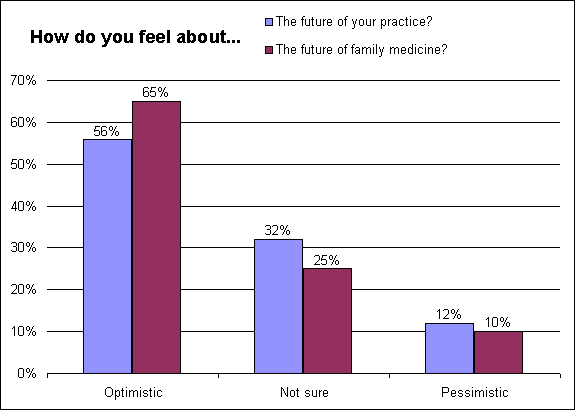
Fam Pract Manag. 1999;6(3):21-22
Y2K Update: HCFA says it'll be ready, but will you?
In a Jan. 28 letter to providers, HCFA Administrator Nancy-Ann Min DeParle said HCFA recently has made “substantial progress” in making its systems Y2K compliant and is “confident that all Medicare claims processes will be ready and able to function come January 1, 2000.”
But she warned providers that “you must also be ready if you wish to be paid promptly.” For example, HCFA recently announced that, beginning April 5, it will return all Medicare claims that are submitted without eight-digit date formats (i.e., 01/01/2000).
To encourage providers to prepare their entire facilities for 2000, the agency has created a Y2K readiness checklist, which is available at http://www.hcfa.gov/y2k/pltrenc.htm. It helps providers identify the many items they use that rely on microchips or dates, from computer software to defibrillators to elevators. Medicare contractors are also offering providers Y2K-compliant billing software free or at minimal cost.
HMO, POS enrollment slows; overall health plan costs rise
Enrollment in employer-sponsored HMO and point-of-service (POS) plans decreased marginally last year, while overall health plan costs increased at the fastest rate in five years, according to a recent survey of nearly 4,200 employers.
From 1997 to 1998, HMO and POS plans saw a 3 percent decrease in enrollment, from 50 percent to 47 percent. Indemnity-plan enrollment also decreased, from 15 percent to 13 percent. But PPO enrollment increased, from 35 percent to 40 percent.
Meanwhile, total spending for all employer-based health plans rose 6.1 percent. PPO costs went up 5.2 percent, indemnity-plan costs went up 7.6 percent, HMO costs rose 1.6 percent (the first increase since 1994) and POS plan costs rose 2.6 percent. Costs rose fastest in the Northeast (8.8 percent), where PPO enrollment grew to 31 percent. Costs rose slowest in the West (2.3 percent), where HMO enrollment grew to 43 percent.
Almost three-fourths of employers say they expect even larger cost increases this year, averaging 9 percent.
The 13th annual National Survey of Employer-Sponsored Health Plans was conducted by William M. Mercer Inc.
Boomers will demand greater accountability
As aging baby boomers begin to spend more time at the doctor's office, health care's emphasis on quality and customer service will intensify, says a study from the Institute for the Future (funded by the Robert Wood Johnson Foundation) reported in the Jan. 10 Los Angeles Times.
The baby-boom generation, accustomed to “brand names and flexible options” in the retail market, will demand the same from the health care industry. “Until 2010, when the first of the baby boomers hit 65, change will be incremental,” says Wendy Everett, director of the study. “But after that, be prepared for a major consumer revolution.”
Quote. End quote.
“So often we find ourselves practicing insurance rather than medicine. We need to get back to the reason our profession exists: our patients.”
Karen Hill, MD, an Austin, Texas, internist quoted in an article titled “Bleak Days for Doctors” in the Feb. 8 issue of Time.
The future of family practice: A glass half full?
Only a slight majority (56 percent) of family physicians say they are optimistic about the future of their practices, according to a 1998 survey commissioned by Family Practice Management. Nearly one-third are unsure of their practice's future; 12 percent are pessimistic about it.
But family physicians are slightly more confident about their specialty; 65 percent of respondents said they are optimistic about the future of family medicine.

Medicare overpayments continue to fall
The percentage of improper Medicare payments reached a three-year low in fiscal year 1998, totaling an estimated 7.1 percent of all fee-for-service Medicare payments, according to the Department of Health and Human Services' Office of Inspector General (OIG). The rate was 14 percent in FY 1996, the first year for which the government conducted an overpayment audit, and 11 percent in FY 1997.
The OIG estimates that improper payments for FY 1998 totaled $12.6 billion. Of that, about $9.3 billion was paid for medically unnecessary or upcoded services. Almost 26 percent of the improper payments were for physician services. The report doesn't identify the proportion of the overpayments attributable to fraud versus errors.
According to the OIG, the estimates come from reviews of a statistically valid sample of 5,540 Medicare claims from 600 patients nationwide.
New York HMO complaints double
According to the State of New York Insurance Department, complaints about health insurers reached a record level in 1997.
Of nearly 8,000 complaints that year, the department upheld approximately 2,250. Of that, 1,400 were about HMOs (more than double the previous year's number), 300 were about nonprofit health plans and 550 were about commercial indemnity insurers. Much of the increase, according to the report, was due to providers' complaints about HMOs' late payment of claims.
More than half of the complaints about HMOs were resolved in the enrollees' favor.
Groups collaborate on performance measures
Three major quality oversight organizations have announced plans to develop common performance measures for physicians, health plans and hospitals.
The American Medical Accreditation Program, the National Committee for Quality Assurance and the Joint Commission on Accreditation of Health Care Organizations say their efforts will produce better, more broadly applicable measures that interrelate and set accountability standards at each level of the health care system. The groups say their collaboration should also reduce the cost and effort required to collect performance data.
Last year, the three groups created the Performance Measurement Coordinating Council to make performance measurement more efficient and coherent. The council will carry out the groups' common agenda.